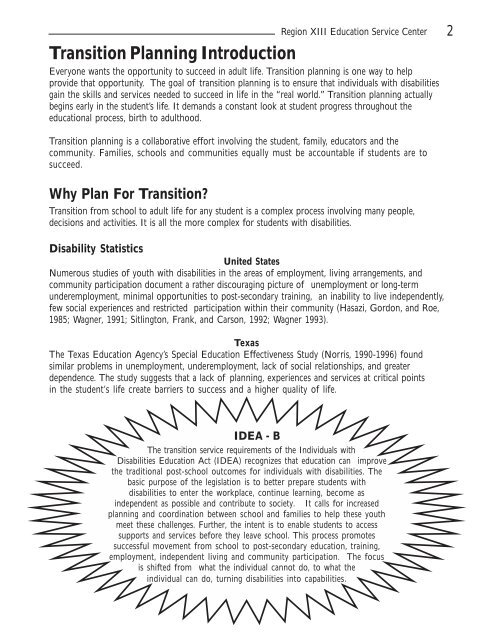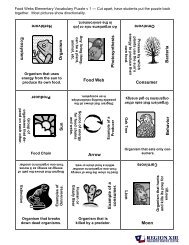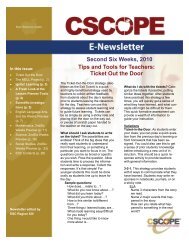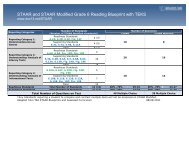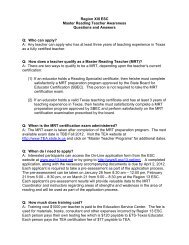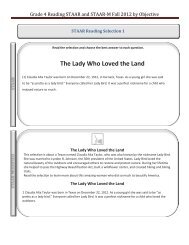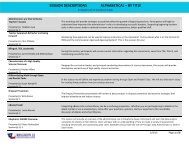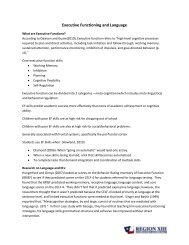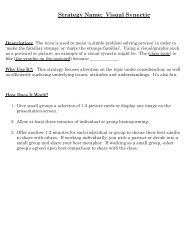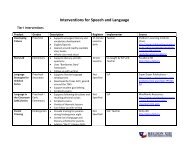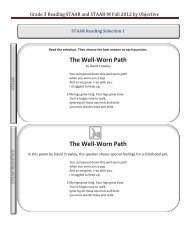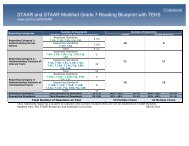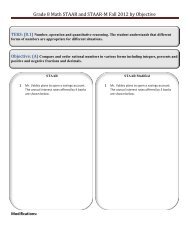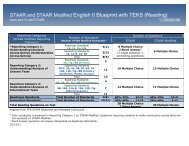Transition Inventory Manual - Region 13
Transition Inventory Manual - Region 13
Transition Inventory Manual - Region 13
You also want an ePaper? Increase the reach of your titles
YUMPU automatically turns print PDFs into web optimized ePapers that Google loves.
<strong>Region</strong> XIII Education Service Center<br />
<strong>Transition</strong> Planning Introduction<br />
Everyone wants the opportunity to succeed in adult life. <strong>Transition</strong> planning is one way to help<br />
provide that opportunity. The goal of transition planning is to ensure that individuals with disabilities<br />
gain the skills and services needed to succeed in life in the “real world.” <strong>Transition</strong> planning actually<br />
begins early in the student’s life. It demands a constant look at student progress throughout the<br />
educational process, birth to adulthood.<br />
2<br />
<strong>Transition</strong> planning is a collaborative effort involving the student, family, educators and the<br />
community. Families, schools and communities equally must be accountable if students are to<br />
succeed.<br />
Why Plan For <strong>Transition</strong>?<br />
<strong>Transition</strong> from school to adult life for any student is a complex process involving many people,<br />
decisions and activities. It is all the more complex for students with disabilities.<br />
Disability Statistics<br />
United States<br />
Numerous studies of youth with disabilities in the areas of employment, living arrangements, and<br />
community participation document a rather discouraging picture of unemployment or long-term<br />
underemployment, minimal opportunities to post-secondary training, an inability to live independently,<br />
few social experiences and restricted participation within their community (Hasazi, Gordon, and Roe,<br />
1985; Wagner, 1991; Sitlington, Frank, and Carson, 1992; Wagner 1993).<br />
Texas<br />
The Texas Education Agency’s Special Education Effectiveness Study (Norris, 1990-1996) found<br />
similar problems in unemployment, underemployment, lack of social relationships, and greater<br />
dependence. The study suggests that a lack of planning, experiences and services at critical points<br />
in the student’s life create barriers to success and a higher quality of life.<br />
IDEA - B<br />
The transition service requirements of the Individuals with<br />
Disabilities Education Act (IDEA) recognizes that education can improve<br />
the traditional post-school outcomes for individuals with disabilities. The<br />
basic purpose of the legislation is to better prepare students with<br />
disabilities to enter the workplace, continue learning, become as<br />
independent as possible and contribute to society. It calls for increased<br />
planning and coordination between school and families to help these youth<br />
meet these challenges. Further, the intent is to enable students to access<br />
supports and services before they leave school. This process promotes<br />
successful movement from school to post-secondary education, training,<br />
employment, independent living and community participation. The focus<br />
is shifted from what the individual cannot do, to what the<br />
individual can do, turning disabilities into capabilities.


